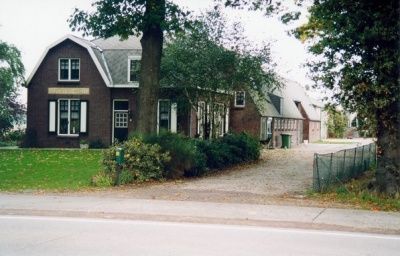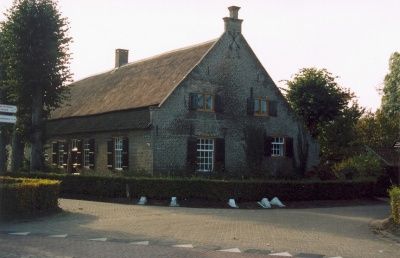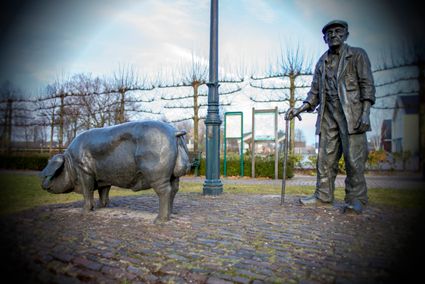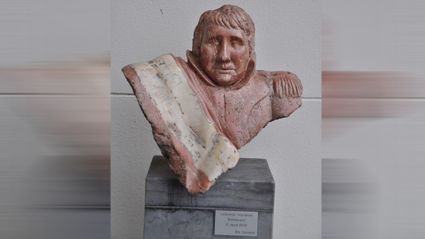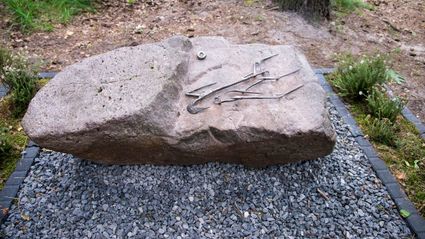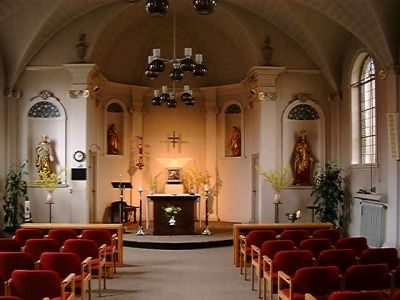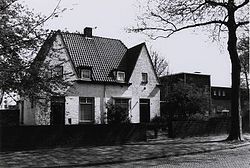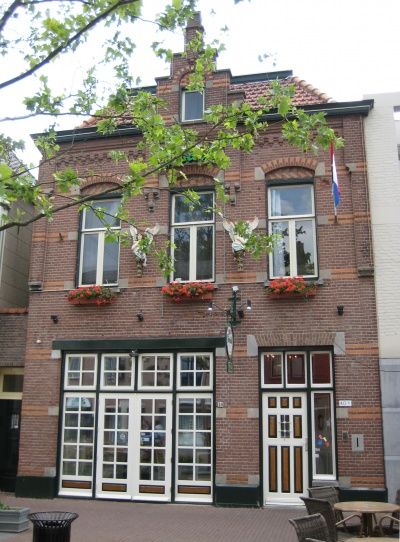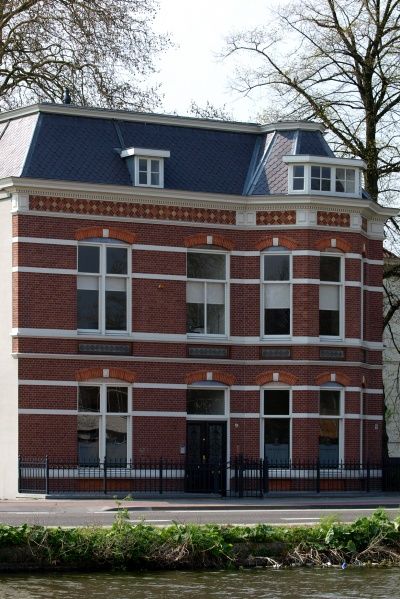Boerderij: Gertrudahoeve, De Rips
The Gertrudahoeve in De Rips.
Built in 1929, the Gertrudahoeve farm is beautifully preserved. It is typical of the reclamation farms in the Peel that show influences f…
The Gertrudahoeve in De Rips.
Built in 1929, the Gertrudahoeve farm is beautifully preserved. It is typical of the reclamation farms in the Peel that show influences from all over the Netherlands. In other words, it is a melting pot of different styles in which no clear origin can be recognised. The large-scale reclamations of the late 19th, early 20th century transformed the Peel from remote swampy moorland into the modern-day production landscape. The living area is at right angles to the farm area behind it as if the gigantic stable got lost behind it. However, the whole building is under one roof. The farmhouse looks particularly Frisian, a head-hulled farmhouse, as they were built in the poorer Frisian lands. The receding barn doors visible on the right of the photo are mostly seen in Drenthe. It is a farm built on dairy farming, with space for many cows and agricultural machinery. Single-branch specialised farming slowly emerged in the first half of the 20th century under the influence of better (joint) marketing opportunities. In the past, buyers often went through the door or paid in milk and eggs for purchases in shops. All things that led to poor prices. The Boerenbond played a major role in this as can be seen in De Mortel's marketing centre. The building has a mansard roof typical of the first half of the 20th century and is covered with asbestos slates. The Gertrudahoeve is a national monument.
